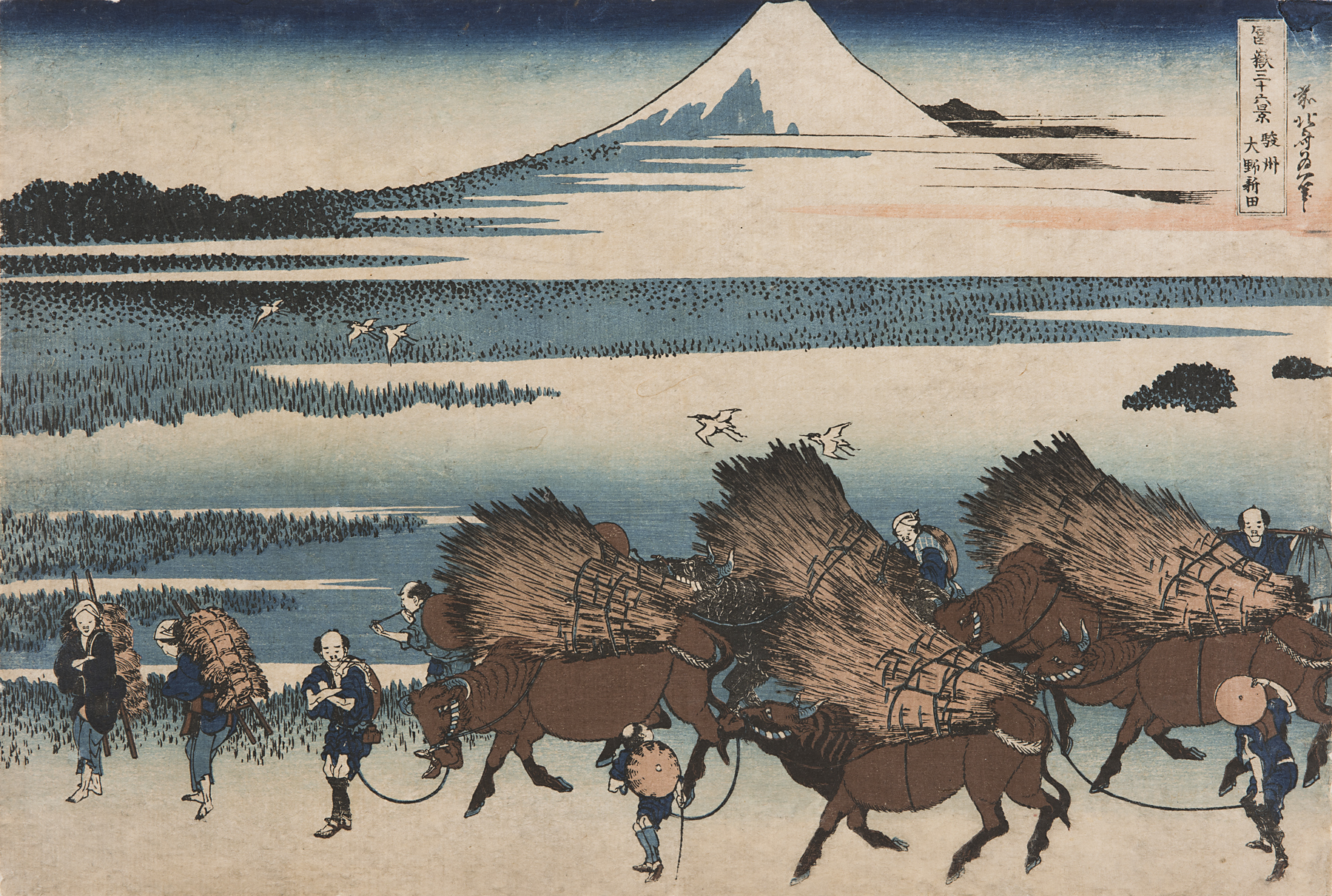Sunshū Ōno shinden (The New Fields at Ōno in Suruga Province), Katsushika Hokusai
Artwork Overview
Katsushika Hokusai, artist
1760–1849
Sunshū Ōno shinden (The New Fields at Ōno in Suruga Province),
early 1830s, Edo period (1600–1868)
Portfolio/Series title: Fugaku sanjūrokkei (Thirty-six Views of Mt. Fuji)
Where object was made: Japan
Material/technique: color woodcut
Dimensions:
Image Dimensions Height/Width (Height x Width): 249 x 370 mm
Image Dimensions Height/Width (Height x Width): 9 13/16 x 14 9/16 in
Sheet/Paper Dimensions (Height x Width): 249 x 370 mm
Sheet/Paper Dimensions (Height x Width): 9 13/16 x 14 9/16 in
Mat Dimensions (Height x Width): 14 x 19 in
Image Dimensions Height/Width (Height x Width): 249 x 370 mm
Image Dimensions Height/Width (Height x Width): 9 13/16 x 14 9/16 in
Sheet/Paper Dimensions (Height x Width): 249 x 370 mm
Sheet/Paper Dimensions (Height x Width): 9 13/16 x 14 9/16 in
Mat Dimensions (Height x Width): 14 x 19 in
Credit line: Source unknown
Accession number: 0000.2901
Not on display
If you wish to reproduce this image, please submit an image request

